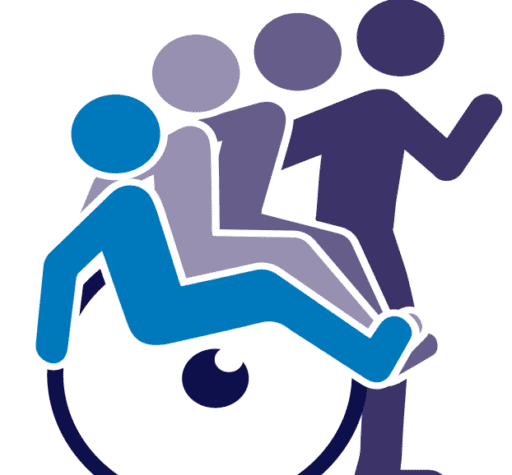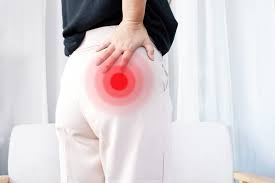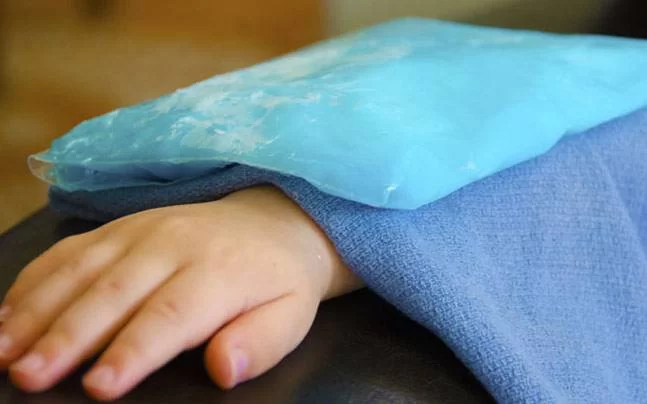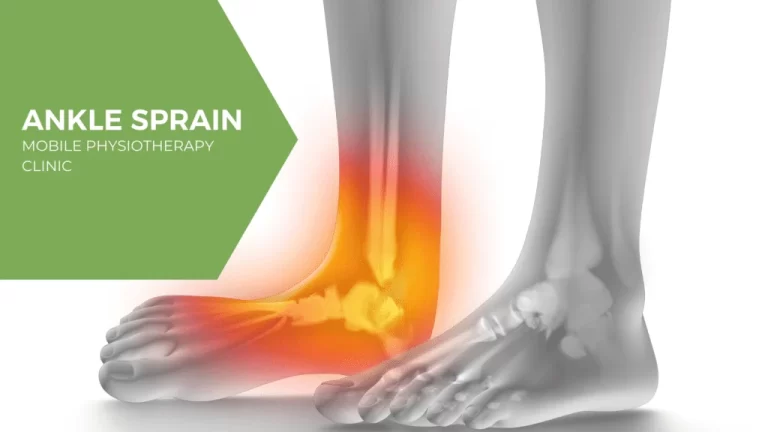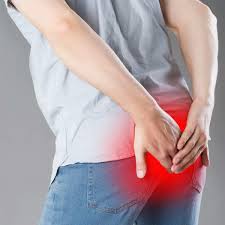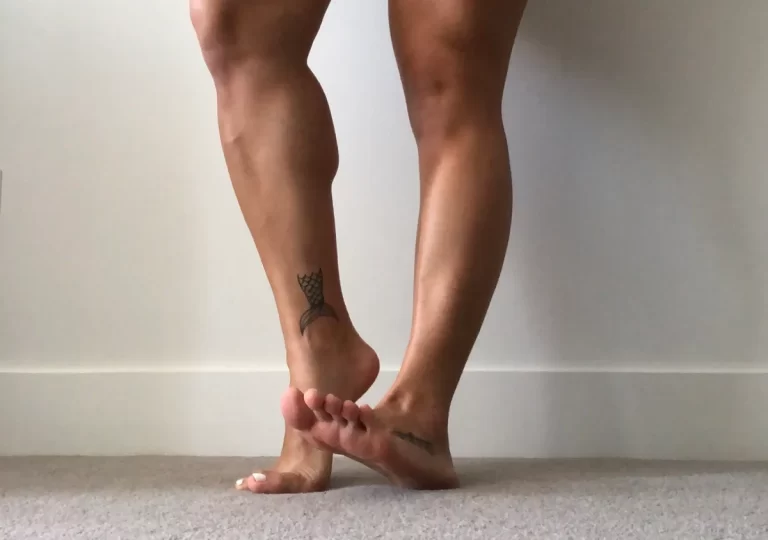20 Best Buttock Pain Relief Exercises
Table of Contents
Introduction:
Your ability to sit, walk, and carry out daily tasks may be affected by buttock pain, which can be both uncomfortable and restrictive. It frequently results from bad posture, sciatica, strained muscles, or extended sitting.
Exercises for buttock pain relief are specifically made to target the hips, lower back, and gluteal muscles to increase flexibility, ease tension, and improve the healing process.
These exercises relieve pressure on joints or nerves, improve blood flow, and strengthen the surrounding muscles. A consistent regimen of mild stretches and strengthening exercises can offer substantial alleviation and avert further suffering.
Causes of Buttock Pain:
Numerous underlying problems involving muscles, nerves, joints, or posture might cause buttock pain. The following are some typical reasons for buttock pain:
- Piriformis Syndrome: The piriformis muscle, situated deep within the buttocks, is affected by this ailment. It can impinge on the sciatic nerve when it is tight or swollen, which can hurt the buttocks and occasionally cause tingling or numbness in the legs.
- Herniated Disc: Nerves that travel to the buttocks may be compressed by a herniated disc in the lower spine, resulting in weakness, tingling, or pain there.
- Sacroiliac (SI) Joint Dysfunction: Buttock pain, particularly when moving or sitting for extended periods, can be caused by inflammation or misalignment of the sacroiliac joint, which joins the spine to the pelvis.
- Bursitis: Localized pain, discomfort, and stiffness can result from bursitis, an inflammation of the hip or buttocks’ bursae, which are fluid-filled sacs that lessen tissue friction.
- Prolonged Sitting or Poor Posture: Long-term sitting, particularly on hard or uneven surfaces, can put strain on the buttock muscles, especially if one has bad posture.
- Trauma or Injury: Acute or chronic pain can arise from damage to the muscles, ligaments, or bones in the buttock area caused by falls, collisions, or sports accidents.
- Infections or Medical Conditions: Infections (like abscesses) or diseases (like tumors) can occasionally cause buttock pain and should be examined by a physician.
Buttock Pain Relief Exercises:
Stretching Exercises for Buttock Pain:
Piriformis Stretch:
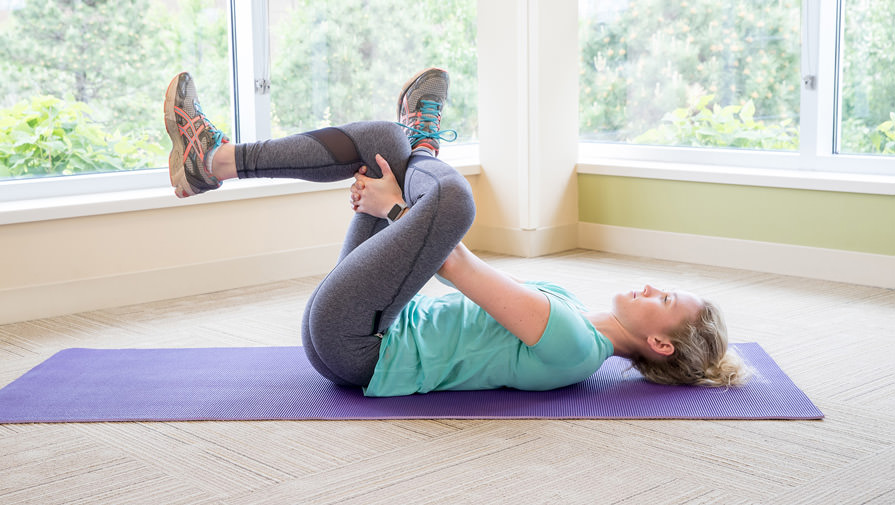
When buttock pain is caused by a tight or irritated piriformis muscle, the piriformis stretch is a very useful exercise. Pain that travels down the leg might occasionally result from irritation of the adjacent sciatic nerve caused by this deep muscle in the buttocks. In addition to increasing hip flexibility and relieving tension, stretching the piriformis also eases pressure on the sciatic nerve. This stretch is a beneficial addition to any pain management or rehabilitation regimen since it can reduce pain, improve mobility, and promote general hip and lower back health when done regularly.
Seated Figure-Four Stretch:
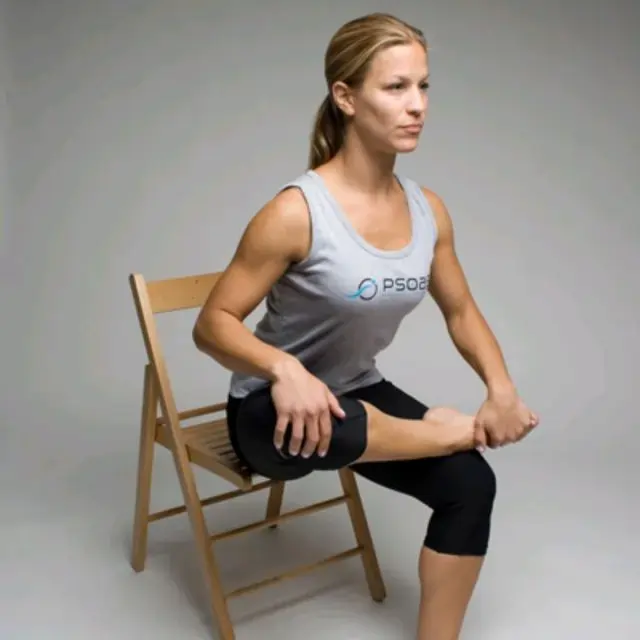
A quick and easy exercise that helps with tight hips and buttocks is the sitting figure-four stretch, which works the piriformis and gluteal muscles. Because it relieves tension in the lower back and buttocks, this stretch is particularly helpful for people who spend a lot of time sitting down. It can relieve strain on the sciatic nerve and gently stretch deep gluteal muscles by externally rotating the hip.
Reclining Pigeon Pose:
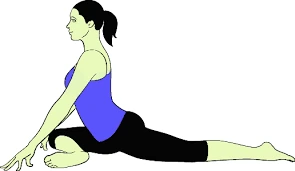
As a restorative stretch that works the glutes, piriformis muscle, and hips, the reclining pigeon stance is very useful for easing sciatic nerve and buttock pain. This pose, which is done while lying on your back, provides a deep yet gentle stretch without straining your joints or spine. It increases hip flexibility, eases lower body tightness, and lessens nerve compression caused by tense muscles. The reclining pigeon pose is a safe and calming method to reduce pain, improve circulation, and support pelvic and lower back health.
Child’s Pose:
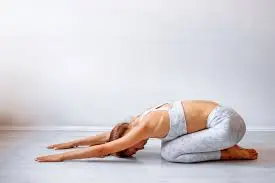
Child’s Pose is a soothing and healing yoga pose that effectively relieves tension and pain in the buttocks by gently stretching the hips, lower back, and buttocks. This position promotes relaxation and increased flexibility by lengthening the spine and releasing tense muscles around the pelvis and glutes. Additionally, it promotes mindful, deep breathing, which lowers stress and aids in pain management in general. Child’s Pose, which is appropriate for all fitness levels, is frequently used as a resting position during yoga or exercise sessions and can be particularly helpful in reducing buttock pain.
Supine Hamstring Stretch:
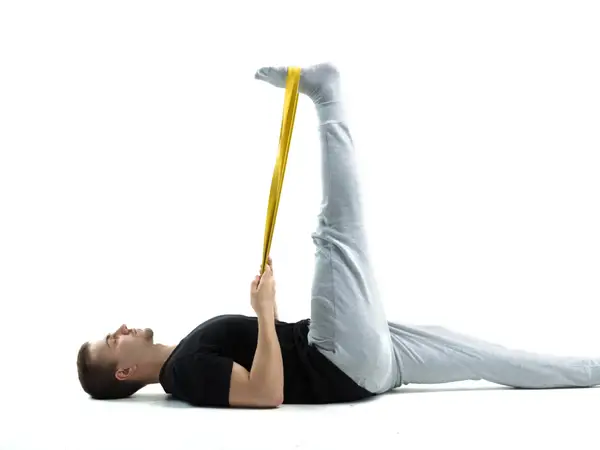
A mild and effective workout that helps with buttock pain relief, the supine hamstring stretch works the hamstrings, glutes, and lower back. This stretch, which is done while lying on your back, lengthens the muscles along the back of the thigh, which helps ease the tension that tight hamstrings cause in the pelvis and buttocks. Additionally, it promotes improved spinal alignment and posture by increasing lower body flexibility. The supine hamstring stretch is a useful supplement to any buttock pain management regimen since it can reduce pain associated with sciatica, muscle stiffness, or extended sitting.
Knee to Chest:
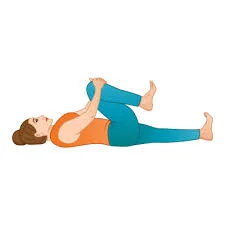
This stretch, which is done while lying on your back, lengthens the spine, eases tense muscles, and improves circulation in the lower body. It’s particularly helpful for easing pain caused by strained muscles, bad posture, or extended sitting.
Sitting Rotation Stretch:
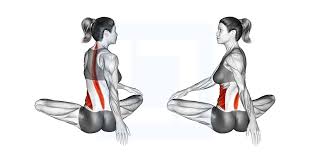
This stretch, which is done while seated, includes turning the torso to one side and twisting it more deeply with the other arm. This stretch is particularly helpful for reducing buttock pain caused by extended sitting, bad posture, or compression of the sciatic nerve. The seated rotation stretch is a useful supplement to any lower body or pain-relieving regimen since it promotes improved spinal alignment and core stability.
Standing Iliotibial Band Stretch:
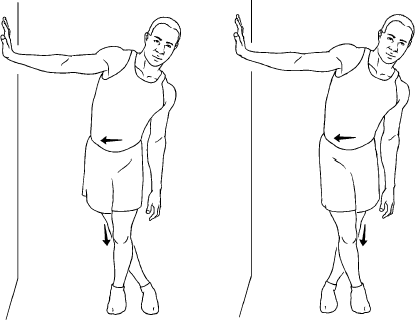
Hip and buttock pain can be worsened by tightness in the IT band, particularly in people who are athletic or have bad posture. This stretch increases flexibility and lessens pressure on the lower body by releasing tension in the thigh, glutes, and outer hip. It also encourages improved posture and balance when done standing. The standing IT band stretch can be used regularly to promote good hip and buttock function and ease pain.
Seated Butterfly Stretch:
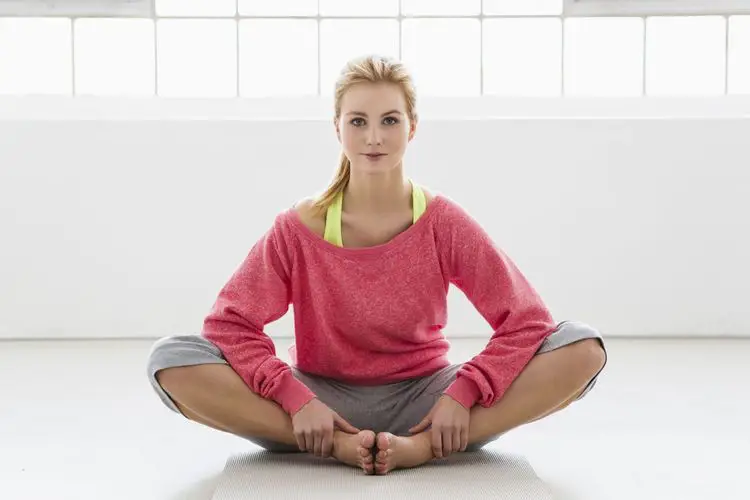
A traditional flexibility exercise that works the inner thighs, hips, and groin while also gently working the lower back and glutes is the seated butterfly stretch. This stretch helps relieve tension in the lower body and opens up tight hips. It is especially helpful in reducing buttock pain caused by stiffness, bad posture, or extended sitting. A great complement to any pain-relieving or recuperation regimen, the seated butterfly stretch not only increases hip mobility but also supports improved posture, circulation, and relaxation.
Quadriceps Stretch:
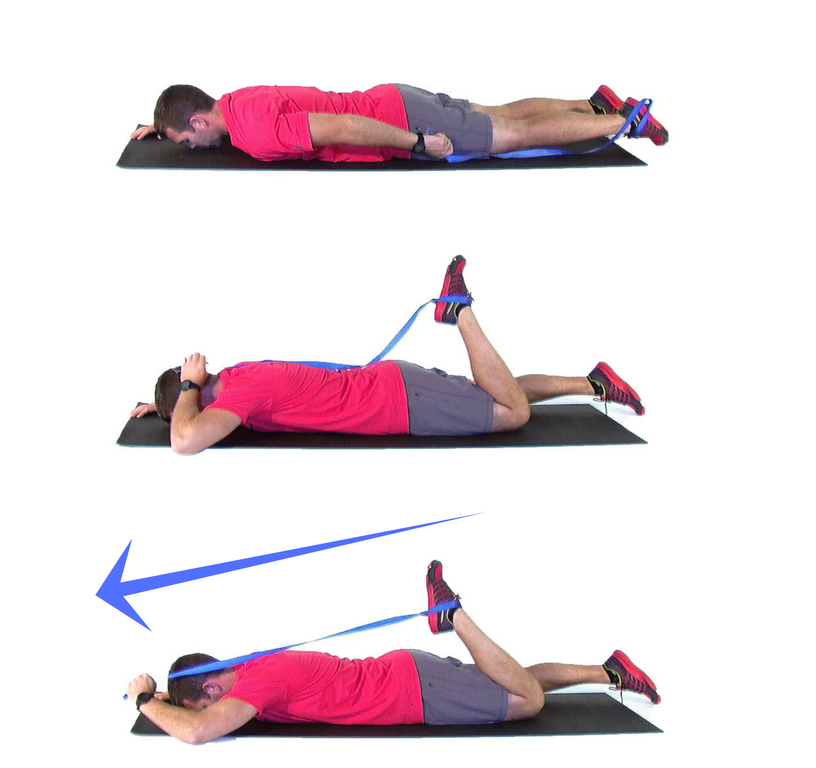
A basic flexibility exercise that works the quadriceps, which are muscles in the front of the thigh, is the quadriceps stretch. Although the stretch’s main target is the thighs, it is also essential for releasing hip tension and enhancing pelvic alignment, both of which can lessen buttock pain. This stretch, which may be done standing or on your side, helps reverse the effects of extended sitting and muscular imbalances. It is performed by bending one knee and pushing the foot into the glutes. Improved posture, more efficient movement, and general lower-body comfort are all supported by the quadriceps stretch, which increases flexibility and decreases tightness in the front of the lower body.
Strengthening Exercises for Buttock Pain:
Glute Bridges:
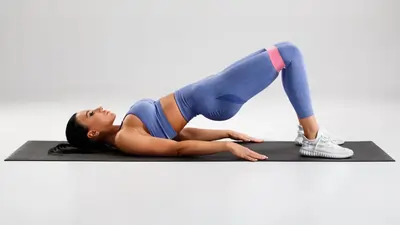
By raising your hips off the floor while you’re on your back, you can immediately engage and stimulate your buttock muscles. In addition to relieving current buttock pain, strengthening these muscles supports the spine and pelvis, lowering the chance of further pain. All fitness levels can benefit from this low-impact workout, but those who have sciatic nerve irritation, lower back pain, or weak glutes will benefit most.
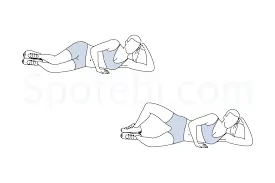
The gluteus medius and hip stabilizer muscles, which are essential for preserving ideal hip alignment and minimizing buttock pain, are worked during clamshells, a focused strengthening exercise. By strengthening the outer glutes, clamshells support the lower back, enhance hip stability, and address muscular imbalances. Because of this, they are very helpful in reducing pain from ailments, including sciatica, hip instability, and piriformis syndrome. Clamshells are gentle and low-impact, making them perfect for rehabilitation exercises and novices.
Leg Raises:
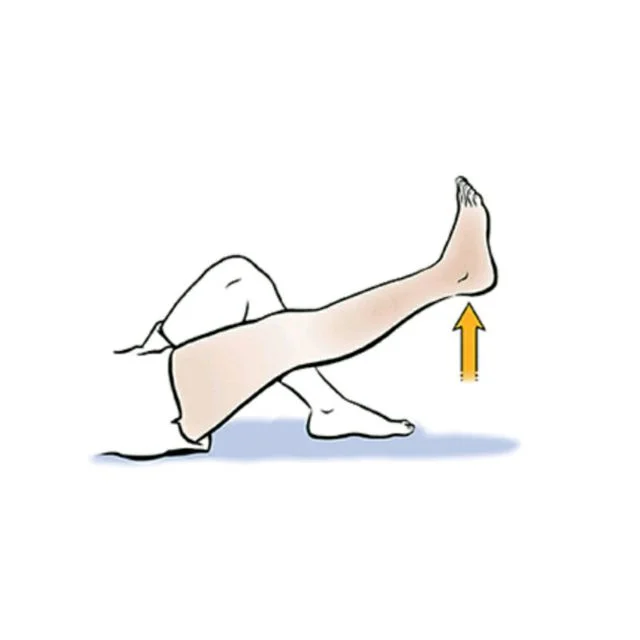
Leg raises are a flexible exercise that helps with buttock pain since it works the hip flexors and glutes in addition to the lower abdominal muscles. This exercise, which is done while lying on your back, includes raising your legs while maintaining control and straightness. This increased stability can prevent pain from resulting from muscular imbalance or insufficient core support, as well as reduce pressure on the buttocks. A thorough regimen for reducing buttock pain should include leg raises.
Side-Lying Leg Raises:
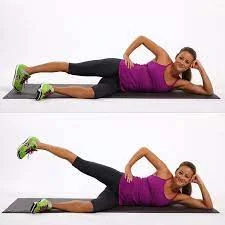
A straightforward yet effective exercise for the outer glute muscles, especially the gluteus medius, which is crucial for hip stability and lower body alignment, is the side-lying leg raise. This exercise, which is done while lying on your side, includes carefully raising and lowering the upper leg. Side-lying leg raises are a great way to relieve and prevent buttock pain since they strengthen these muscles, which lessen tension on the lower back and buttocks. In addition to enhancing hip mobility, balance, and posture, this exercise is particularly helpful for people recuperating from injuries or who have weak muscles from prolonged sitting or inactivity.
Hip Abduction:
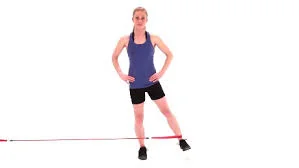
An effective exercise for the outer hip and glute muscles, especially the gluteus medius and minimus, is hip abduction. These muscles are necessary to promote healthy lower body movement and stabilize the pelvis. The leg moves away from the body’s midline during this exercise, which can be performed with resistance bands, standing, or lying down. Exercises that strengthen the hip abductors are perfect for preventing and treating buttock pain since they lessen the strain on the lower back and buttocks. Frequent practice enhances posture, hip mobility, and balance, all of which are essential for leading an active and pain-free life.
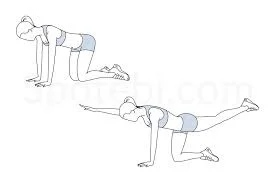
Balance, coordination, and muscle endurance are enhanced by this regulated action, especially in the lower back and buttocks. The bird dog helps reduce buttock pain caused by bad posture, weak muscles, or spinal misalignment by activating and strengthening the glutes and core.
Sit-to-Stands:
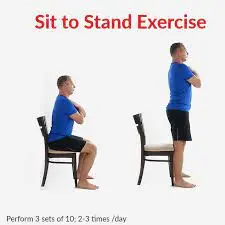
Sit-to-stands are a practical and efficient lower-body workout that enhances mobility and balance while strengthening the thighs, core, and glutes. This easy exercise helps develop the strength required for daily tasks by simulating everyday activities by moving from a seated position to a standing position and back down again. Because it strengthens and activates the gluteal muscles, improves hip stability, and encourages improved posture, it is very helpful for reducing buttock pain. Because they are low-impact and appropriate for all levels of fitness, sit-to-stand exercises are a great complement to general lower-body conditioning and rehabilitation regimens.
Step-Ups:
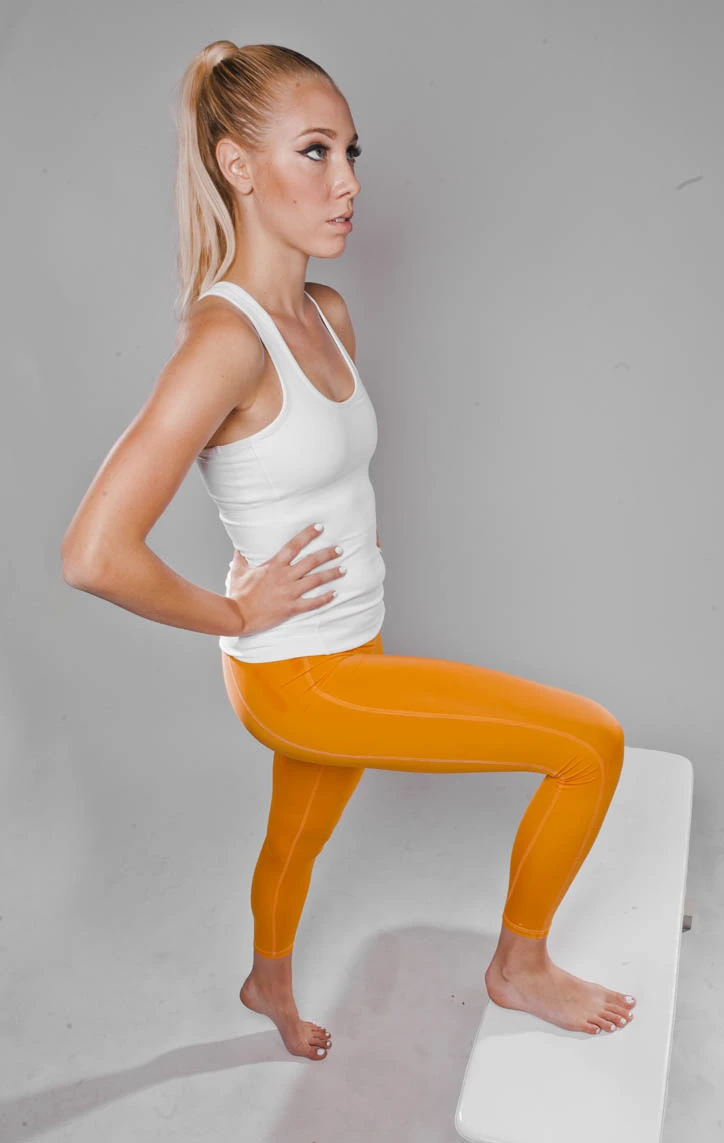
A dynamic lower-body workout, step-ups mainly work the calves, hamstrings, quadriceps, and glutes. This exercise is very practical because it is performed by stepping onto a raised surface, such as a bench or strong step, and it closely resembles daily activities like ascending stairs. By strengthening the gluteal muscles, step-ups can ease buttock pain and lessen lower back strain. Step-ups are a low-impact but efficient exercise that is perfect for strengthening the lower body, aiding in recovery, and averting future pain from tight or weak glutes.
Deadlift With Resistance Band:
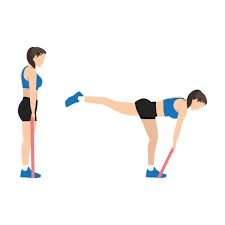
A great strength-building exercise that works the glutes, hamstrings, lower back, and core, all important for controlling and preventing buttock pain, is the deadlift with a resistance band. By adding controlled tension throughout the activity, a resistance band helps to better stimulate muscles and lowers the danger of strain that comes with using large weights. This exercise strengthens the posterior chain, enhances posture, and encourages good hip mechanics by having you stand on the band and hinge at the hips to drop and elevate your torso. Resistance band deadlifts can help improve mobility and spinal alignment, reduce pain, and increase functional strength when performed regularly.
Standing Hip Extension:
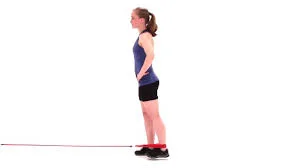
Standing hip extensions are a straightforward yet effective exercise that strengthens the hips and lower back while focusing on the gluteal muscles. This exercise, which involves extending one leg backward while maintaining an upright posture and an engaged core, works the glutes and improves hip stability.
It is particularly helpful in reducing buttock pain caused by weak muscles, bad posture, or extended sitting. Standing hip extensions strengthen the lower body overall, support healthy spinal alignment, and improve muscular balance. Any pain relief or mobility routine would benefit from this low-impact exercise, which is simple to do anywhere and appropriate for all fitness levels.
Conclusion:
Your comfort, mobility, and general quality of life can all be greatly enhanced by including buttock pain relief exercises in your daily routine. These focused stretches and strengthening exercises improve flexibility, stability, and circulation while addressing the underlying causes of pain, which include tight muscles, compressed nerves, and bad posture.
Regardless of whether you have sciatica, muscle strain, or pain from extended sitting, these workouts provide a secure and efficient means of promoting healing and averting further problems. You can lessen pain, regain function, and keep up a healthier, more active lifestyle with consistent practice.
FAQs
Avoid prolonged sitting, go for quick walks, or switch between sitting and standing if you have piriformis syndrome-related buttock pain. To help distribute weights evenly across the pelvis and through the spine, sit with an upright, neutral spine and refrain from bending forward or slumping.
Your glutes may get bigger with exercises including squats, lunges, bridges, and deadlifts. These can be done in the gym or at home with resistance bands, free weights, or your body weight.
This point and the top of the buttock crease are in a straight horizontal line. There will be a sensitive spot roughly two-thirds of the way between the hipbone and the buttock crease if you apply pressure along this line.
This will encourage relaxation and aid to warm up the muscles. Start by applying more pressure to particular tense places using your fingertips or thumbs.
Many conditions can cause buttock pain from extended sitting, but piriformis syndrome and ischial bursitis are frequent causes. It is advised to take regular pauses, stretch, and sit with proper posture to reduce the pain.
Numerous conditions, from injuries and strained muscles to nerve-related problems like sciatica or piriformis syndrome, can cause buttock pain. Bursitis, sacroiliac joint dysfunction, or even referred pain from hip issues are additional possible causes.
With rest and basic therapies, the majority of episodes resolve in a few days or weeks. However, if the pain was caused by an injury or if the symptoms persist for longer than a few weeks, consult your healthcare physician.
References:
- Hip & buttock exercises. (2021, November 16). https://www.arthritis.org/health-wellness/healthy-living/physical-activity/getting-started/your-exercise-solution/lower-body-movements/hips-and-buttocks-movements
- Hip and buttock pain physiotherapy : East Cheshire NHS Trust. (n.d.). https://services.eastcheshire.nhs.uk/physiotherapy/self-help/shoulder-pain-physiotherapy-2
- Dumain, T. (2023, June 2). How to relieve buttock pain: 7 exercises to try. CreakyJoints. https://creakyjoints.org/diet-exercise/buttock-pain-exercises/
- Bridges. (n.d.). [Video]. Hingehealth. https://en-gb.hingehealth.com/resources/articles/buttock-pain-when-sitting-and-lying-down/
- WebMD Editorial Contributor. (2024, June 2). Sciatica: Exercises for pain relief. WebMD. https://www.webmd.com/pain-management/sciatica-exercises-pain-relief
- Clinic, O. (2025, February 28). How to relieve buttock muscle pain. The Orthopedic Clinic. https://orthotoc.com/how-to-relieve-buttock-muscle-pain/
